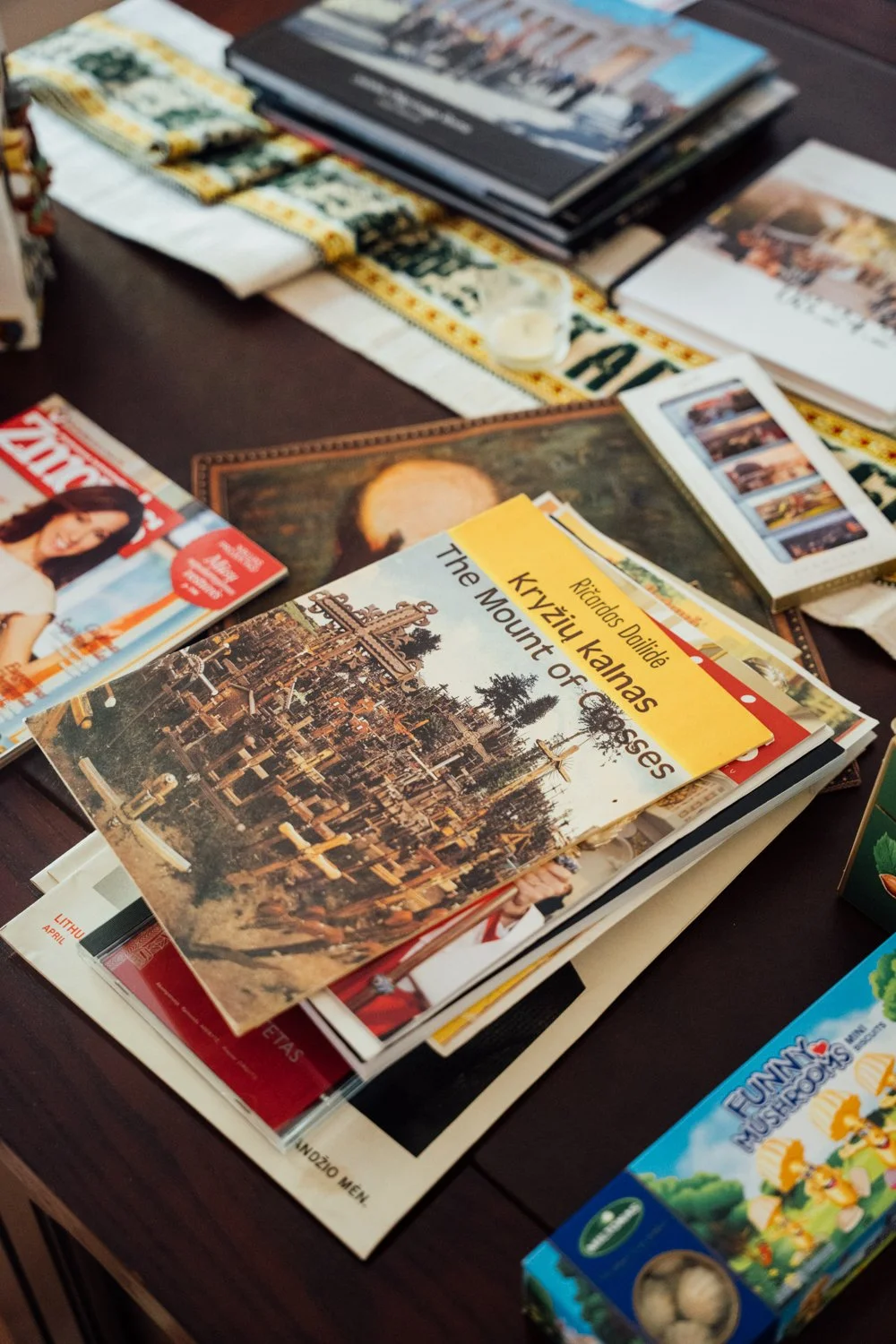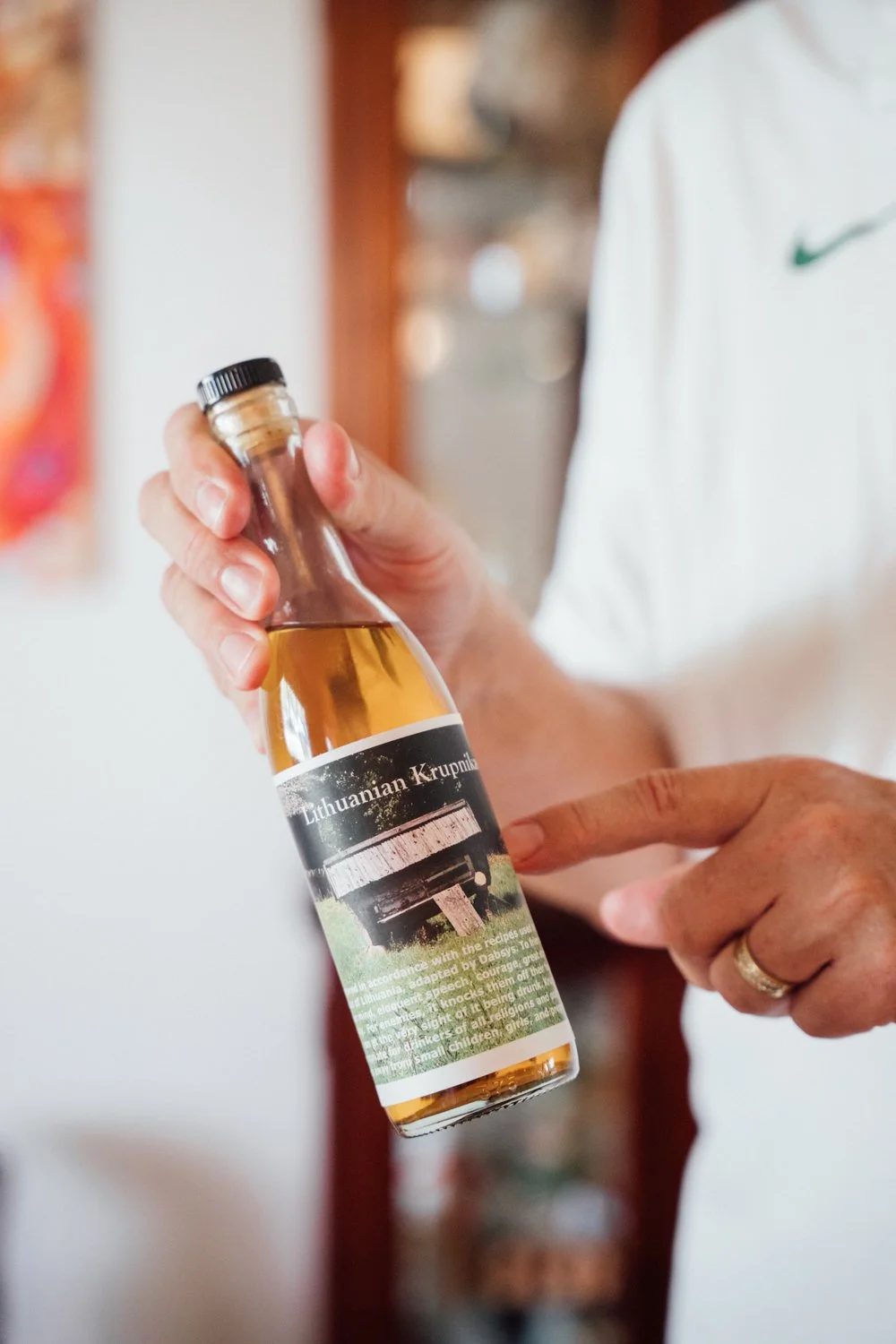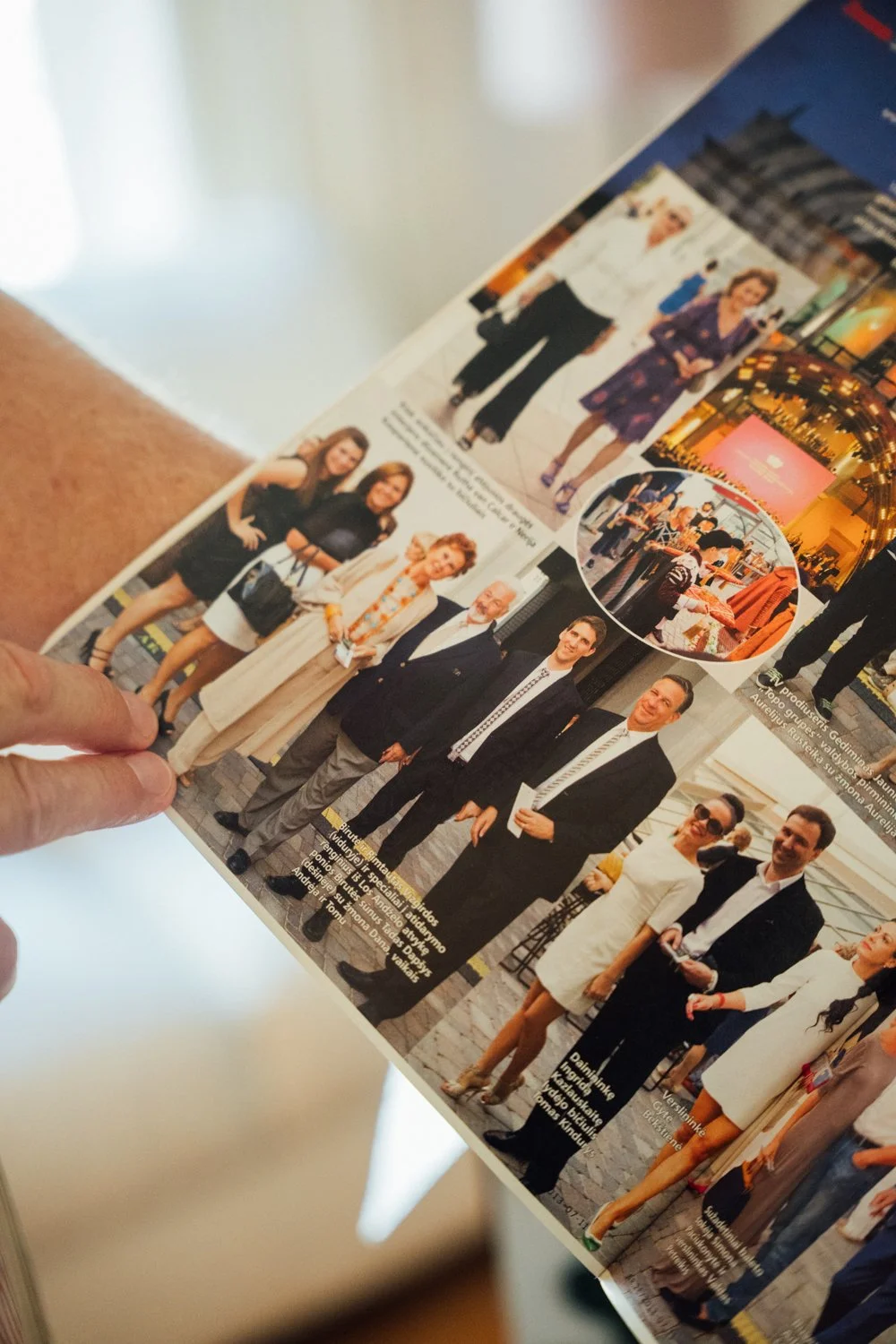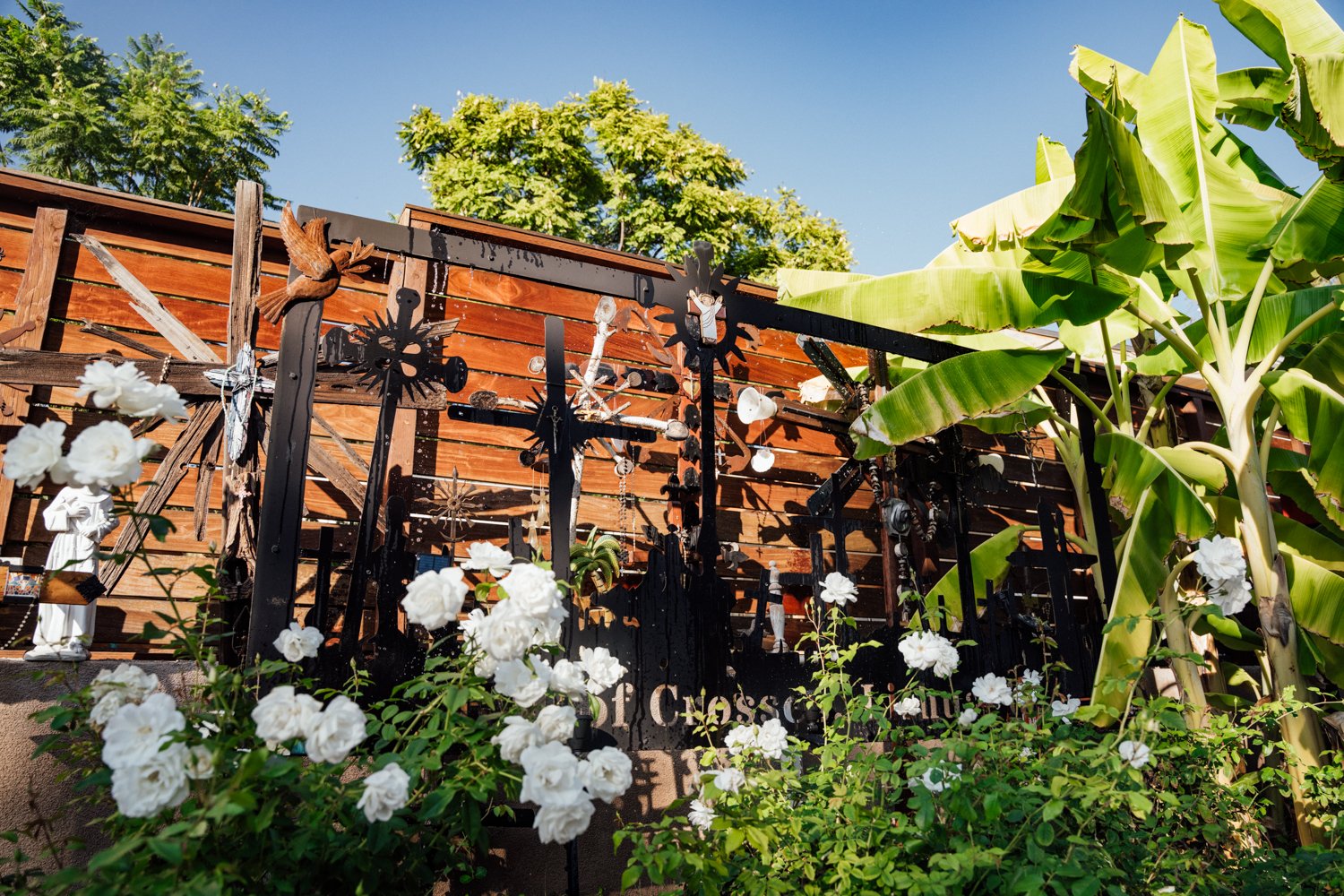Tadas Dabsys: Honoring Lithuanian Traditions Through Craft and Story
When you sit down with Tadas Dabsys, you feel his connection to Lithuania immediately. It is in the way he talks about his parents and grandparents, in the pride he carries for the community that raised him, and in the way he creates with his hands. His stories flow through generations, from displaced persons camps to Little Lithuania in Los Angeles, to the backyard where he now builds birdhouses that carry entire histories inside them.
For Tadas, being Lithuanian was never an abstract idea. It was his daily life. As he explained, growing up in Los Angeles was essentially growing up inside a culture rebuilt by immigrants determined to preserve what they were forced to leave behind. His family came to the United States after fleeing Lithuania during World War II. His grandfather was a judge who risked his life helping Jewish families survive. At one point, Tadas shared the story he grew up hearing:
"He would bring in the German officers and would sit him down, give him something to drink, give him something to eat. And after got him a little bit drunk, he would show them that, look, everybody's busy and, you know, they wouldn't believe it, but he's like, well, there's, you know, two major, major trains cross here. So there's a big station here and everyone's working."
His family’s escape happened quickly. His grandfather returned home one day and a neighbor warned him that the Nazis had been there looking for him. They fled that same night, ultimately landing in displacement camps and eventually Los Angeles.
Once in Los Angeles, they settled near St. Casimir’s Parish, a hub for Lithuanians rebuilding community. Tadas describes it as the cultural center of everything.
"Life here was kind of just, it was absolutely normal to be a Lithuanian because that's all we really knew."
He went to Lithuanian school daily. His friends were Lithuanian. His household spoke Lithuanian as the primary language. He learned English only when his brother started kindergarten. As he put it:
"English was my second language. I mean, when we were born at home, we just spoke Lithuanian."
Every part of the culture was kept alive out of necessity. At the time, Lithuania was under Soviet occupation and many traditions were suppressed back home. The diaspora held onto the songs, dances, language, and rituals so they would survive.
"You need to make sure that everybody still remember the language, knows how to read, write, all the culture, all the singing, all the dancing."
Tadas grew deeply involved in the cultural organizations that shaped his upbringing. He became vice president of the World Lithuanian Youth Association, continued folk dancing, and sang in choirs. Dancing, for him, was more than performance.
"It tells a story. So it's the same with Lithuanian. So it's usually pairs dancing, sometimes that you have dances that just the ladies dance and just the men dance, but it acts out a story."
That storytelling is woven throughout the culture. Folk festivals, independence celebrations, language schools, and church events all existed to keep those stories alive until Lithuania could reclaim them.
Today, one of the most unexpected and beautiful ways Tadas expresses his heritage is through woodworking. It began simply. His wife, Dana, used to place decorative birdhouses along their backyard fence, but strong winds would send them tumbling. So Tadas started making sturdier ones himself.
During the pandemic, while reorganizing storage, he came across decades of trinkets, keys, pins, plaques, and souvenirs. Instead of letting them continue to sit in boxes, he began building birdhouses that would give these forgotten items a new life.
"I want to display them somewhere and those kinds of things. Instead of having it sit in a drawer that no one ever uses, I'm going to make a birdhouse for it."
Each house becomes a little archive. There is the one decorated with old family keys. The one covered in Tomas’s childhood trophies. The one designed with his old drumsticks. And the one made for his daughter, Andreja, using the souvenir spoons he collected for her during work trips.
"It was one of the first ones I built and still my favorite to do."
Working with his hands does more than preserve memories. It brings him peace.
"It is very very therapeutic just to work with your hands and create something."
And it connects him back to a Lithuanian tradition of craftsmanship rooted in woodcarving, metalwork, and pagan symbolism. Even the crosses he carves are inspired by one of his most sacred places, the Hill of Crosses in Lithuania.
"My favorite place on the planet is the Hill of Crosses in Lithuania. There's hundreds of thousands of crosses there. And I could just sit there or stand there and be completely at peace."
Tradition lives on in different ways for every family. For Tadas, the joy is watching how his children carry the culture forward in their own ways. Tomas and Andreja danced, sang, attended Lithuanian school, and participated in scouts. Andrea recently sang at a song festival in Cleveland, continuing a three generation line of Dabsys family members who have performed at these events.
And they make space for evolution too. When Tomas struggled with the structure of Lithuanian school, Tadas listened, and adapted:
"He understood most of it but not everything. And, you know, he just wanted to learn the language first and then move on. And I said, okay, good point. You don't have to go anymore."
The heart of it is continuity, not perfection. Keeping pieces of culture alive while allowing them to grow.
"However you want to pitch in, pitch in and we'll accept you and we'll love you."
Ask Tadas how he makes waves, and his answer reflects the thing that guides him through every story and every craft he creates.
"My impact is I'm so proud of my culture and Lithuania culture has so much to offer that I just, everybody I talk to and again, it comes up naturally because of my name. So I think that's kind of been my biggest impact. I'm a champion for Lithuania."
And he is. Through his stories, his birdhouses, his singing, his family traditions, and the love he pours into preserving his heritage, he continues to keep Lithuanian culture alive in Los Angeles and within the generations of his family.
A legacy made not just through history, but through hands, heart, and home.
This story was created by Making Waves Project as part of Traditions: Stories We Keep, our series exploring the customs, rituals, and personal histories that connect us to our past and to each other. These stories remind us that tradition is alive and always evolving, shaped by the people who carry it forward.
By sharing these moments, we hope to honor the ways culture is passed down, reimagined, and kept alive, and to celebrate the roots that shape who we are today.
If you or someone you know has a tradition that deserves to be part of Making Waves Project, we would love to hear from you. And if you are a brand interested in partnering with us to help tell more stories like this, reach out at hello@makingwavesproject.com.
Follow along with Traditions: Stories We Keep on our Instagram and YouTube, and explore new stories at makingwavesproject.com/stories.
Photography by Robiee Ziegler
Produced by Katie Caro














